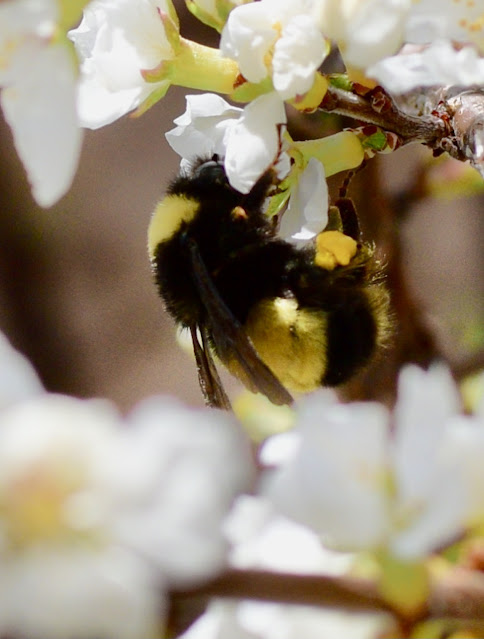Can you imagine how tall we must seem to a creature as small as an ant? How threatening are our movements to a beetle scurrying as best it can, across our path?
Ever wonder how a dragonfly can catch insects in mid-flight? They have been clocked at 35 miles an hour. The Hawk moth comes in second at 33.7 miles an hour.
What colors of the world do other animals detect (different from what we see)? Some more, some less; octopi and squid detect blue only, while bees detect ultraviolet, blue, and yellow, jumping spiders ultraviolet and green.
Here today, gone tomorrow. Mayflies' lifespan is 24 hours. Yet some insect species are known to live 50 years.
Insects have been around for a while. A Lepidoptera fossil is estimated to be 190 million years old.
How many insect species reside in or visit your backyard? I have recorded over 300 in our Jericho, VT backyard.
How different are insects from us? Insects experience something like pain and even feel persistent pain after an injury. Like us, insects have muscles, nerves, brains, hearts, and other organs.
Insect species are as diverse as perhaps any life we know, yet how many of them are we even aware of?
Insects contribute to vital ecological functions; they pollinate plants, provide pest control, decomposition services, and nitrogen volatilization (so plants can use the nitrogen). They maintain and support wildlife species (think birds, fish, bears, and many others).
Perhaps we might observe and learn a bit about these fascinating and critical to our existence, creatures. They are in large part living right under our feet and nose and flying about us in our yards.
Why not get to know some of the many life forms that do so much for us, and are in many ways like us. Respect and protect insects; our lives are dependent on their success.
Further Reading: Insect Apocalypse? What is Really Happening; Why it Matters and How We All Can Help. Or view on Youtube at https://www.youtube.com/watch?v=P7wt2QvuVww
This week the Bumblebee queens are bearing the cold and gathering food for the upcoming brood.
 |
| Tri-colored Bumble Bee |
 |
| Yellow-banded Bumble Bee |
 |
| Perplexing Bumble Bee |
 |
| Brown-belted Bumble Bee |
 |
| Id pending |
The more we know about the life around us, the more we will appreciate the services they provide, and the almost incomprehensible beauty of sight and behavior that life exhibits.
Bernie
Observing life in nature.
Connecting native habitat, wildlife, and community.
Emailed Comments:
Thanks for posting your blog on Front Porch Forum. I love seeing what you see and know. The bees are really beautiful.
Ann

No comments:
Post a Comment